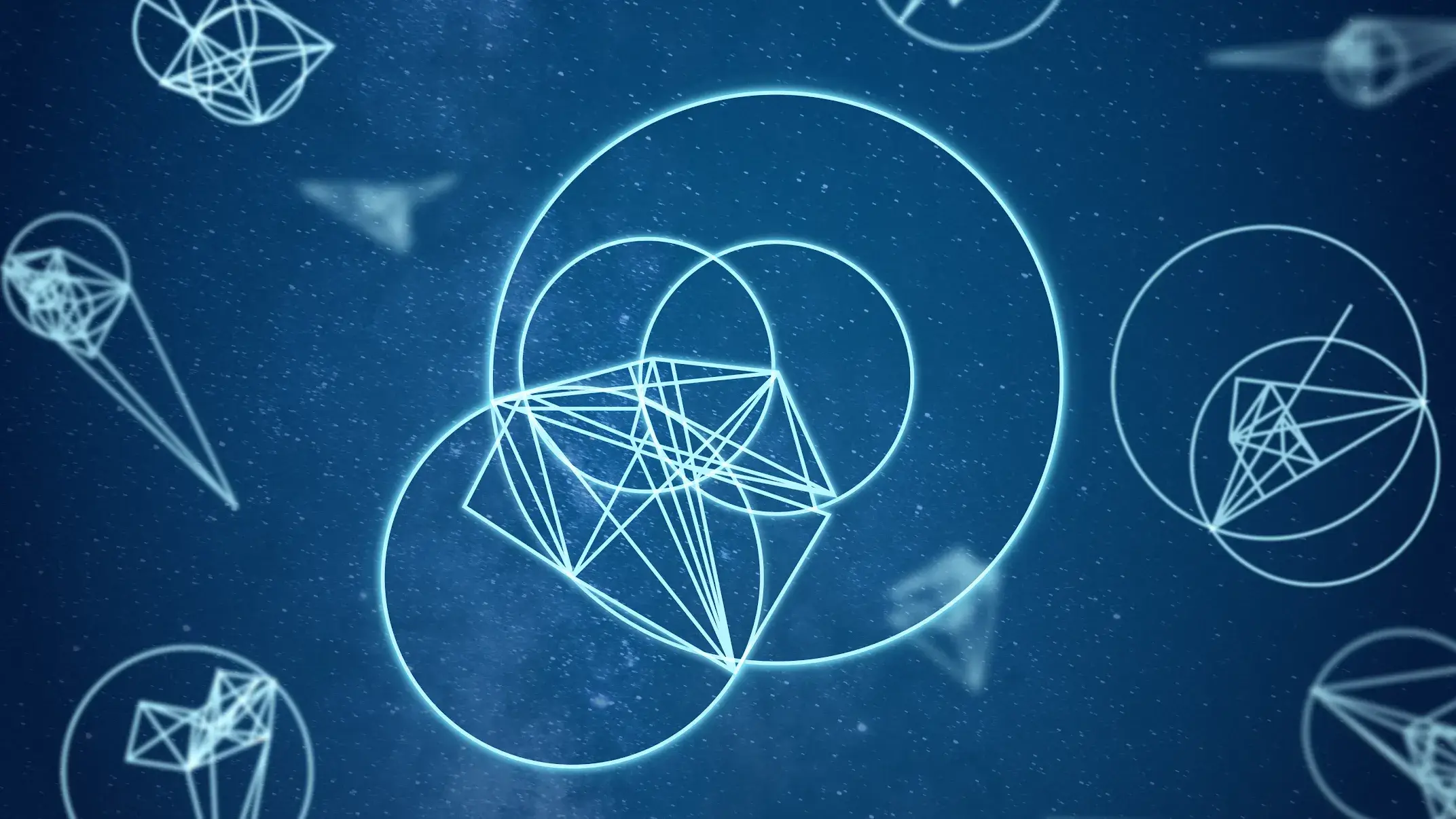Introduction:
Picture this: an AI system that not only understands language but can also tackle intricate geometry problems with ease. That’s exactly what DeepMind’s AlphaGeometry brings to the table. But what is it exactly, and why is it making waves in the AI community?
AlphaGeometry is the brainchild of DeepMind, Google’s AI research division, and it’s causing quite a stir. This innovative system merges a neural language model with a symbolic deduction engine to crack complex geometry puzzles. It’s like having an AI math whiz at your fingertips, capable of Olympiad-level feats in geometry.
But why should you care? Well, imagine the possibilities. From revolutionizing education to enhancing problem-solving in various industries, AlphaGeometry has the potential to reshape how we approach mathematical challenges.
In this article, we’ll peel back the layers of deepmind AlphaGeometry. We’ll delve into its origins, how it operates, and explore real-world applications. By the end, you’ll not only understand AlphaGeometry but also gain insights into the future of AI and its impact on our lives. Get ready to be amazed by the power of AI like never before!
What is AlphaGeometry?
AlphaGeometry isn’t your average AI system—it’s a game-changer specifically crafted for tackling the intricacies of geometry. What sets it apart? Well, it’s all about the approach. Unlike broad-spectrum AI tools like ChatGPT or Gemini, AlphaGeometry zeroes in on geometry with a fresh perspective on logical reasoning. And the results speak for themselves—it’s smashing through barriers in geometry-related tasks like never before.
Here’s the kicker: it’s not just about what AlphaGeometry can do, but how it’s shared with the world. The code, model, and training methodologies are all out there for anyone to explore, thanks to its open-source nature.
But let’s talk numbers. To put AlphaGeometry to the test, the brains at Google DeepMind cooked up a set of geometry problems sourced from the prestigious International Mathematical Olympiads. These are no walk in the park—these are the cream of the crop, hand-picked to challenge even the brightest minds.
So how did AlphaGeometry fare? It’s pretty darn impressive. It tackled 25 out of 30 questions within competition time limits, leaving previous AI systems in the dust and even matching up to the scores of human gold medallists. And if you’re itching for more details, you can dive into the dedicated paper published in Nature for a closer look at the design and results. With AlphaGeometry, the future of geometry-solving AI has never looked brighter.
How Does AlphaGeometry Work?
AlphaGeometry’s secret sauce? It’s all about blending the best of both worlds when it comes to cracking geometric puzzles. While big-name language models like ChatGPT and Gemini are great at spotting patterns, they often stumble when it comes to nailing down precise reasoning.
So, how does AlphaGeometry rise above this challenge? Google DeepMind has a trick up its sleeve: a fusion of a neural language model and a symbolic deduction engine, tailor-made for algebraic and geometric problem-solving. Here’s the breakdown: the neural language model kicks things off by tossing out quick, intuitive ideas and solutions. Think of it like a brainstorming session with your most creative friend.
But where AlphaGeometry shines is with its symbolic deduction engine. This powerhouse relies on formal logic statements to provide solid, verifiable decisions based on the initial ideas from the language model. It’s like having a meticulous planner who double-checks every step of the way.
Now, let’s get down to brass tacks. When AlphaGeometry faces one of those brain-teasing International Mathematical Olympiad (IMO) geometry problems, it’s go-time. The language model swoops in to predict which new geometric constructs—think points, lines, and circles—will be the most game-changing additions to the mix. These insights pave the way for the symbolic engine to work its magic, making deductions and closing in on the solution with each step.
Leveraging synthetic data
Training AlphaGeometry wasn’t a walk in the park, especially when it came to whipping up the right kind of data to teach it the ins and outs of geometry. You see, geometry’s all about space, shapes, distances—the whole nine yards. But translating these concepts into a language a machine can understand? That’s a whole different ball game.
The snag? Traditional geometry-specific programming languages are a bit, well, rigid. They struggle to grasp the nuances of human proofs, especially when things start getting fancy with complex numbers.
This posed a bit of a problem—a bottleneck, if you will—for using machine learning to tackle geometry head-on.
But fear not! The brains at Google DeepMind weren’t about to throw in the towel. Instead, they rolled up their sleeves and got creative. Their solution? Cooking up a boatload of synthetic training data using some nifty parallel computing tricks.
Picture this: a whopping 100 million unique diagrams of geometric objects, all churned out by the magic of parallel computing. It’s like having an endless well of examples for AlphaGeometry to sink its teeth into.
With this treasure trove of synthetic data in hand, AlphaGeometry got to work, learning the ropes of geometry—from properties and relationships to theorems and proofs—without needing a single human demonstration.
In a nutshell, leveraging synthetic data was the secret sauce that helped AlphaGeometry master the art of geometry without breaking a sweat.
What does AlphaGeometry Mean for the Future of AI Research?
So, what’s the scoop on AlphaGeometry and its role in shaping the future of AI research? Let’s break it down.
First things first, let’s set the record straight: AlphaGeometry isn’t out to revolutionize every corner of the AI universe. Nope, it’s laser-focused on abstract geometric problems, particularly those pesky ones from the International Mathematical Olympiads (IMO). Think angles, shapes, and all that fun stuff.
But here’s the kicker: while AlphaGeometry might not be branching out into architecture or engineering anytime soon, it’s paving the way for some seriously cool advancements in AI.
How so? Well, it’s all about that winning combo of neural language and symbolic models. By teaming up these two heavy hitters, AlphaGeometry is showing us how to supercharge AI’s reasoning abilities. And trust me, that’s a big deal.
But it’s not just about AlphaGeometry flexing its brainpower. It’s about what this means for the future of AI research as a whole. Thanks to breakthroughs in generating synthetic data—like the ones that powered AlphaGeometry’s training—we’re edging closer to a whole new frontier in AI.
The end game? Picture this: a new breed of AI systems that go beyond the limitations of today’s models. We’re talking about machines armed with next-level reasoning and problem-solving skills, able to tackle everything from algebra to zoology (okay, maybe not zoology, but you get the idea).
In a nutshell, AlphaGeometry is just the tip of the iceberg. The real excitement lies in what comes next—the promise of AI that’s smarter, sharper, and ready to take on the world’s toughest challenges. Watch this space, folks. The future’s looking bright.
Conclusion: What is DeepMind AlphaGeometry?
In closing, AlphaGeometry emerges as a beacon of innovation in the realm of AI research, demonstrating the remarkable potential of combining neural language and symbolic models. Its prowess in solving complex geometric problems heralds a new era of AI applications, promising advancements not just in mathematics but across various fields. The open-source nature of AlphaGeometry fosters collaboration and exploration, inviting researchers and enthusiasts alike to delve into its workings and push the boundaries of AI further.
As we look to the future, AlphaGeometry catalyzes the development of AI systems equipped with advanced reasoning abilities, poised to tackle diverse challenges with precision and insight. With deepmind AlphaGeometry leading the charge, the horizon of AI research shines with possibilities, offering a glimpse into a future where intelligent machines navigate the complexities of our world with ingenuity and sophistication.

